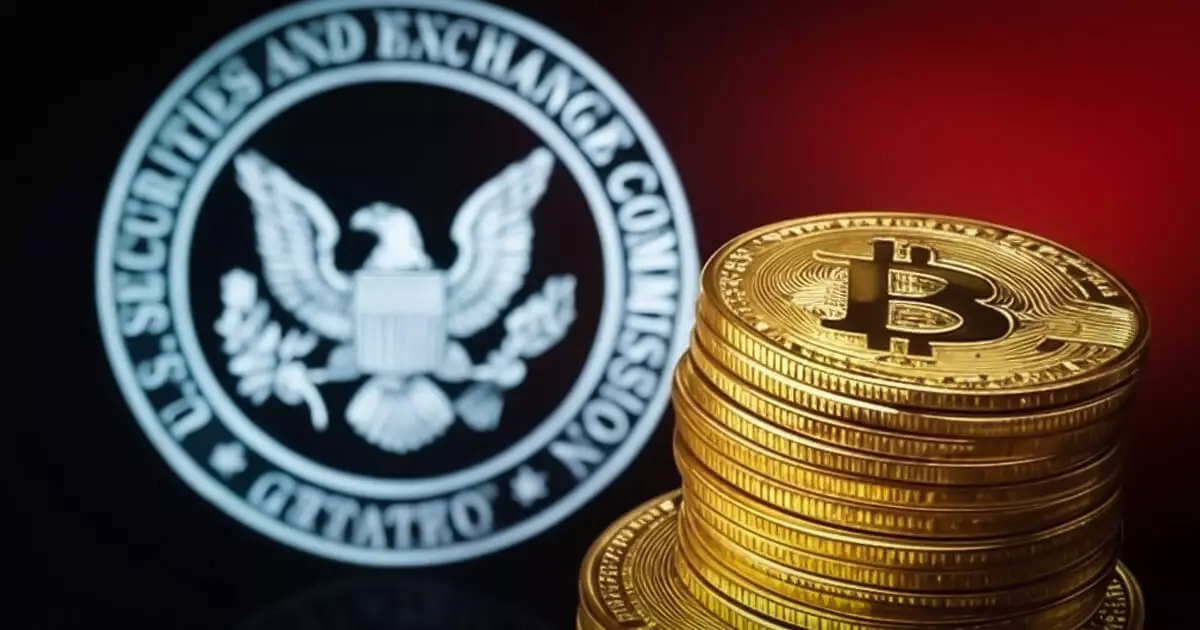Since the inception of cryptocurrencies, the regulatory landscape has been fraught with ambiguity and apprehension. However, on January 21, a significant step toward enhancing regulatory clarity emerged with the announcement from the U.S. Securities and Exchange Commission (SEC) regarding the establishment of a dedicated crypto task force. Led by the well-respected Commissioner Hester Peirce, who has earned the affectionate moniker “Crypto Mom” for her advocacy of blockchain innovation, this initiative symbolizes a momentous shift in the SEC’s approach to overseeing digital assets.
The SEC’s historical reliance on enforcement actions has often invited criticism, characterized as reactive and sometimes misaligned with the fast-paced evolution of crypto technologies. The conventional method has led to a patchwork of regulations that not only confused market participants but also fostered an environment perceived as antagonistic to innovation. By shifting its paradigm toward crafting a cohesive regulatory framework, the SEC hopes to strike a balance between safeguarding investors and fostering an environment conducive to crypto innovation.
Forming the task force represents a deliberate effort to move beyond the Justice Department’s “sledgehammer” approach, as noted by some critics. Instead, this new initiative aims to create practical registration processes and establish clear disclosure standards that effectively meet the diverse needs of investors and industry players alike. This outlines a forward-thinking mindset that acknowledges the complex, multifaceted nature of the crypto ecosystem.
A Collaborative Framework: Building Bridges Across Agencies
One of the most noteworthy aspects of this task force is its commitment to collaboration. Acting Chairman Mark Uyeda emphasized the need for the SEC to coordinate with other federal bodies, such as the Commodity Futures Trading Commission (CFTC), state regulators, and international counterparts. Such collaboration is pivotal in ensuring that U.S. regulations align with global standards while simultaneously addressing the unique challenges presented by the crypto sector.
Peirce’s vision includes fostering dialogue with a wide array of stakeholders such as investors, academics, and industry experts. This multifaceted approach not only legitimizes the inputs from various perspectives but promises a more robust regulatory framework crafted through a collective lens of understanding and expertise.
The task force intends to recalibrate the SEC’s enforcement strategy by deploying resources more strategically. Rather than relying solely on punitive measures, the task force aims to focus enforcement efforts on clear cases of violation—effectively creating a regulatory environment that prioritizes guidance over penalties. This could significantly change how businesses perceive and approach compliance within the crypto space.
The intention is to cultivate a framework where companies feel encouraged to innovate while remaining compliant. This rethinking of enforcement holds the potential to not only minimize confusion but also foster greater industry trust by aligning regulatory practices with the realities of the crypto market.
The Congressional Connection: Input for Enhanced Policy Making
Furthermore, the SEC task force is positioned to provide much-needed technical assistance to Congress, as lawmakers grapple with the evolving nature of digital assets. This advisory role is crucial as it ensures that legislative updates are informed by the complexities of the industry, potentially leading to more coherent and effective regulatory mandates.
Despite the administration of President Trump not overtly addressing crypto in his initial speeches, the ongoing pro-crypto nominations in critical agencies highlight a palpable shift toward embracing innovation within the government. The appointments of figures like Paul Atkins and Caroline Pham underscore an encouraging trend whereby policy leadership increasingly recognizes the significance of fostering a positive environment for cryptocurrencies and blockchain technology.
As the task force embarks on this ambitious journey, a clarion call echoes: the success of this initiative relies heavily on input from diverse stakeholders within and outside the crypto space. Commissioner Peirce’s acknowledgment of the time, patience, and hard work required for success reiterates the need for a cooperative spirit among all parties involved.
In essence, the SEC’s formation of the crypto task force represents not just a regulatory adjustment but a broader acknowledgment of the vital role that digital assets play in modern finance. As we look forward, the hope is that clearer regulations will not only enhance compliance but also encourage innovation, ultimately benefiting the entire financial ecosystem.
















Leave a Reply